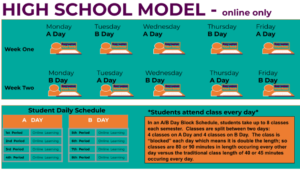10 Strategies to Improve the Quality of Online Learning
Most of the 100 advisors that contributed to the 10 Digital Learning Now (DLN) recommendations mentioned an interest in quality education and actively debated measures to ensure it as online learning continues to expand. However, creating the ideal policy set that encourages both innovation and quality is no small feat. Neither likely state policy environment is attractive—a free-for-all or a web of bureaucratic barriers. It will be hard to strike the right balance between encouraging innovation and ensuring quality. “Without rigorous oversight, a thousand flowers blooming will also yield a lot of weeds,” warned Erin Dillon and Bill Tucker in Education Next.
Let’s start by acknowledging that we currently have a system with highly variable quality and with lack accountability despite a decade of federal efforts to crank up the heat and bring up the rear. Online learning makes it an additional challenge with innovative instructional strategies, multiple providers, and new staffing patterns.
About DLN recommendations, Dillon and Tucker think, “the recommendations would enable all students to access virtual education and end many of the regulatory restraints that stifle the development of innovative options. However, they find the recommendations “light on details for ensuring that innovation actually leads to more high-quality educational options.”
As an analogy, Dillon and Tucker point to the lack of quality authorizing that characterized the first decade of charter schools and the quality standards developed by the authorizers association (NACSA) in response. Like charter operators in the 90s, online learning providers spent most of the Naughts fighting barriers to access. And like NACSA’s charter response, it’s time for a stronger self-policing quality response from online learning providers.
The key quality provision of the DLN recommendations is statewide online learning provider approval where states, “Hold schools and providers accountable for achievement and growth.” There’s obviously a lot implied in that statement including an outcome-oriented contracting and/or authorizing process like NACSA recommends.
Statewide online learning providers can cost effectively add full and part-time options for students but the expanded and unique demands of approving statewide online providers requires states to add capacity and expertise. Quality standards, in the process of being updated, from International Association for K-12 Online Learning provide specific recommendations for states reviewing program proposals.
As online learning continues to double every two or three years, the majority will be provided in and through public school districts. As a result, quality and accountability measures should apply to the whole system rather than treating online learning as an interloper.
Quality and accountability measures should encourage rather than block the transition of public education from print to digital, from time to competency, from groups to students. That will require a focus on growth and better measures of cost per unit of learning.
The fiscal crisis is making purchasers of online content and instruction more price than quality conscious. States can balance the scales, as DLN suggests, by facilitating choice to the course level and including incentives for completion and achievement.
Improved quality will also require better and more consistent student enrollment and completion data. Universal portable student records and consistent measurement of drop periods and completion/graduation rates will help.
Yelp-style customer and expert quality ratings of courses and units will guide student and teacher selection. Ratings should consider content, instruction, assessment, communication, and perceived contribution to learning.
States applying old textbook review processes to digital content are erecting barriers to innovation and doing little to improve quality. New providers should be subjected to a comprehensive authorization/accreditation process that considers content, instruction, staffing, and financial sustainability. To continue to receive state funding, all schools and course providers should be required to demonstrate adequate growth for all students.
Weighted student funding that reflects student challenges would provide incentives for schools and providers to take on difficult to serve populations and, with completion and achievement incentives, would drive investment in innovation.
Online learning, and the growing number of scaled providers, provides a new opportunity to create rapid trials comparing the effectiveness of adaptive units, games, and simulations. An aggressive research agenda would begin to yield breakthroughs in the science of learning and motivation—and in a matter of five months not five years.
Add preparation and professional development to the quality agenda. Every teacher should be prepared to teach online and use online content and tools to facilitate learning.
Erin and Bill are right, we need to do more to improve the quality of online and blended learning, but it’s not just oversight, it will take a comprehensive quality agenda:
- · Updated provider standards
- · Comprehensive provider review process
- · User reviews
- · Completion and achievement bonuses
- · Weighted student funding
- · Universal portable student record
- · State data systems that measure growth and cost
- · Real school and providers accountability with consequences
- · Aggressive research and knowledge development agenda
- · Preparation and professional development in learning online








0 Comments
Leave a Comment
Your email address will not be published. All fields are required.